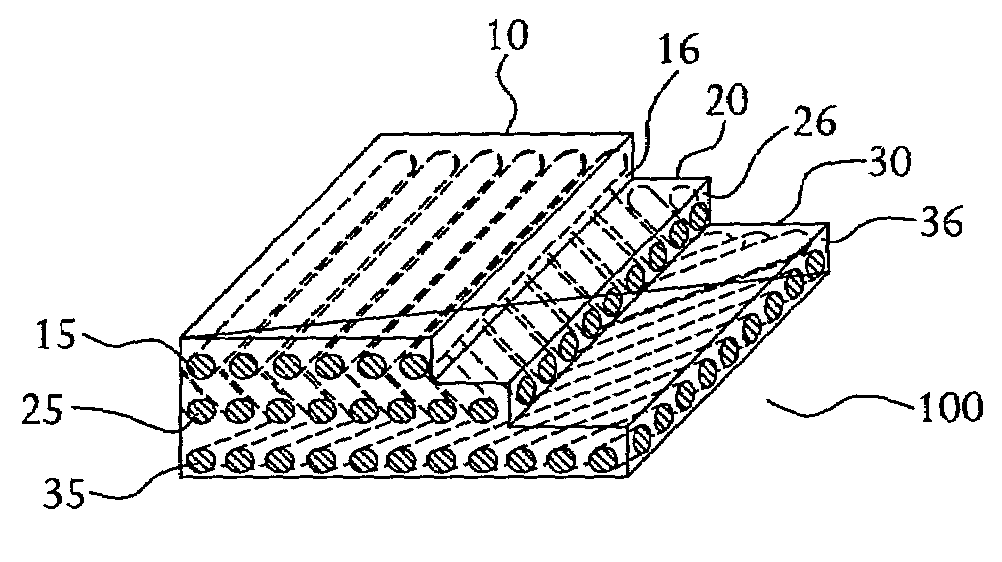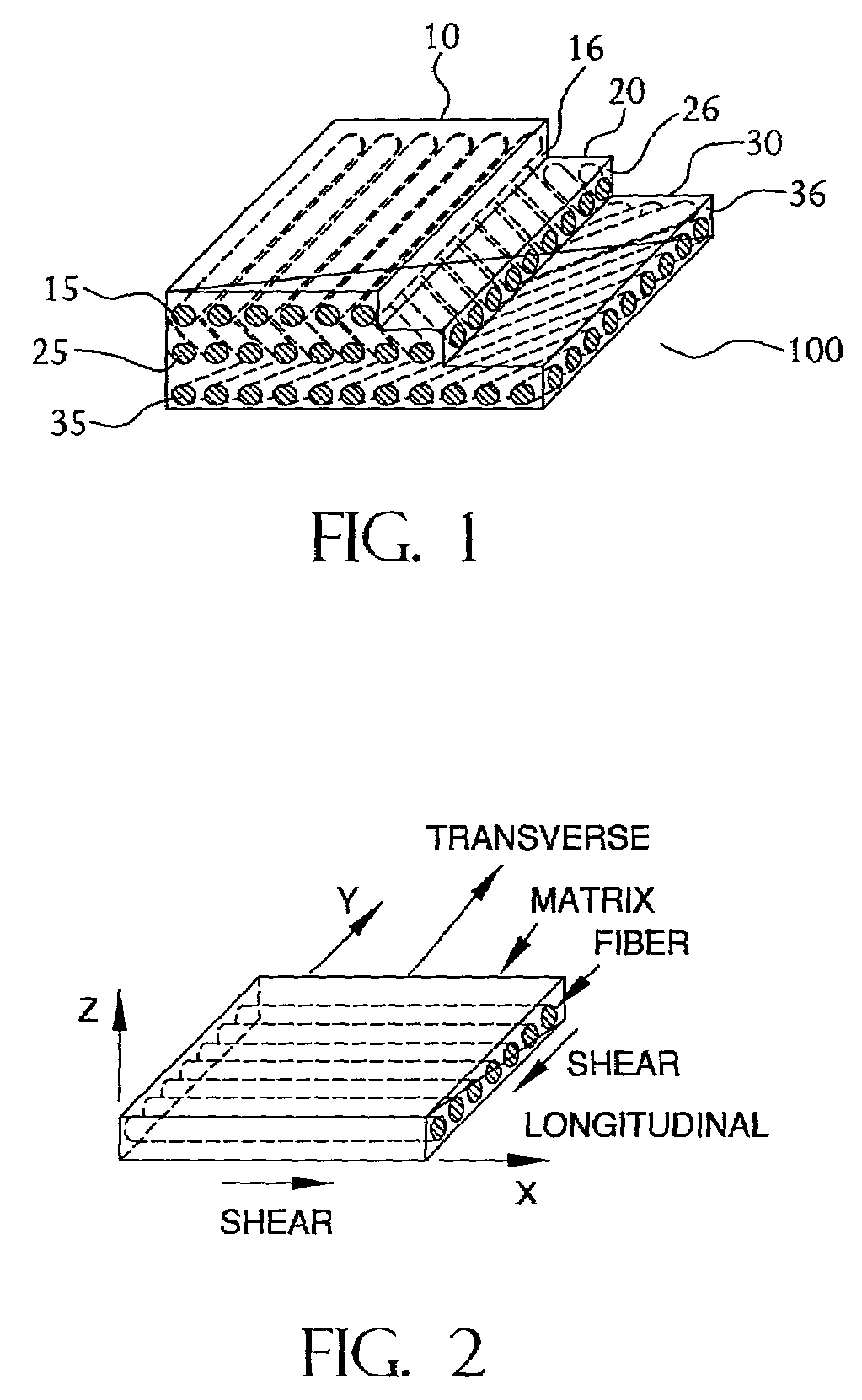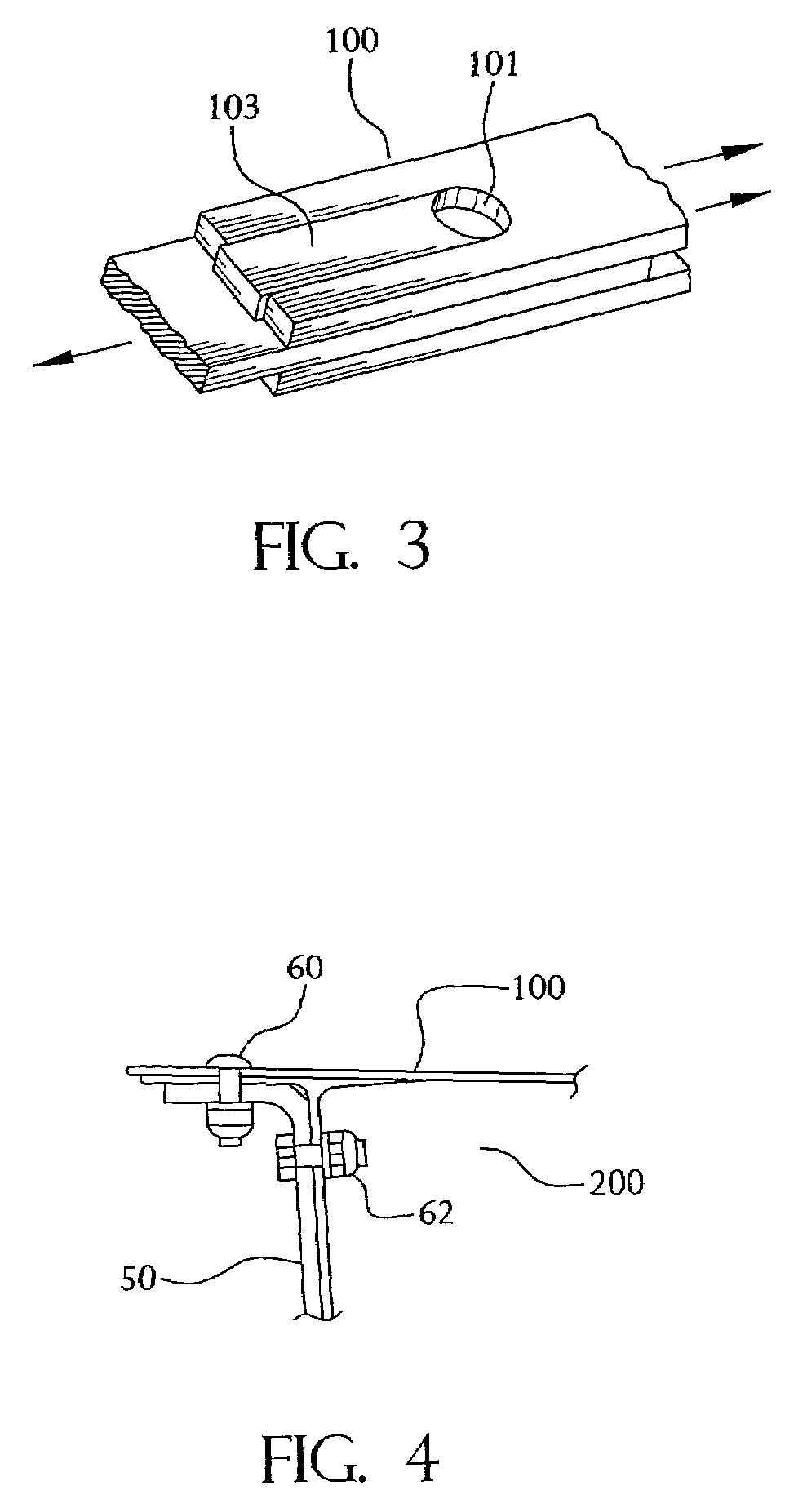Energy absorbent laminate
a technology of energy absorption and laminate, applied in the field of composite materials, can solve the problems of low stress resistance of bolted and riveted joints in composite materials, no relief from elastic stress concentration, and relatively brittleness of fiber-reinforced composite materials compared to conventional ductile metal alloys, etc., to achieve greater elongation, improve shearout, cutting and impact resistance, and improve the effect of strength
- Summary
- Abstract
- Description
- Claims
- Application Information
AI Technical Summary
Benefits of technology
Problems solved by technology
Method used
Image
Examples
example a
[0057]A tri-layered laminate was prepared using two plies of 600 g / m2 consolidated polypropylene glass Twintex® fabric sheet as the outer layers and a 400 g / m2 woven polypropylene fabric as the core layer. The core layer was bonded to the outer layers in a controlled way using a pair of polyethylene adhesive webs, such that a moderate amount of adhesion was achieved upon heating and pressing the combination of layers together. The resulting laminate exhibited higher shearout resistance, high impact and flexural strength and was capable of being recycled due to the presence of principally one thermoplastic matrix, and one fiber type, glass. This design was highly suitable for truck roof panels, highway signs and other fastened plate uses.
example b
[0058]Another tri-layered laminate was prepared by laminating together two 400 g / m2 consolidated polypropylene-glass Twintex® sheets as the outer skins. These skins were combined with a core layer of 300 g / m2 woven aramid fiber (Kevlar®) and consolidated at 200° C. (400° F.), below the melting point of Kevlar®. Alternatively, the Twintex® sheets can be consolidated independently and then glued or joined with polyethylene adhesive webs, or the layers laminated with heated press rolls. The Kevlar® fiber could contain a compatible coating, such as polypropylene, to improve adhesion. The resulting composite was combined with heat and pressure, and resulted in a highly explosion-resistant panel suitable for air cargo containers and cockpit doors.
PUM
| Property | Measurement | Unit |
|---|---|---|
| elongation at break | aaaaa | aaaaa |
| elongation at break | aaaaa | aaaaa |
| elongation at break | aaaaa | aaaaa |
Abstract
Description
Claims
Application Information
 Login to View More
Login to View More - R&D
- Intellectual Property
- Life Sciences
- Materials
- Tech Scout
- Unparalleled Data Quality
- Higher Quality Content
- 60% Fewer Hallucinations
Browse by: Latest US Patents, China's latest patents, Technical Efficacy Thesaurus, Application Domain, Technology Topic, Popular Technical Reports.
© 2025 PatSnap. All rights reserved.Legal|Privacy policy|Modern Slavery Act Transparency Statement|Sitemap|About US| Contact US: help@patsnap.com



